In the 21st century, the world is on the verge of a skin and haircare revolution. There are two big developments here:

Lustriva is a patented, one-of-a-kind complex from Nutrition21 made to support healthier-looking hair and skin. It's a bonded arginine silicate and magnesium biotinate delivering unique and bioavailable forms of silicon and biotin.
- Men, as well as women, are increasingly prioritizing the maintenance of youthful, healthy appearance well into middle age and beyond.
- Consumers are coming to understand that hair and skincare isn't just skin deep – there's a profound connection between proper nutrition, internal health, and appearance.
Rather than just putting on a hat or slathering on sunscreen and calling it a day, consumers are taking a more holistic approach, nourishing skin from the inside out through the pursuit of optimal health and wellness through appropriate sun exposure and nutrition.
As evidence for the validity of this holistic approach, we cite the fact that many of the ingredients people apply topically for skin health can also be taken internally for skin health. Examples of this concordance include hyaluronic acid, vitamins C and E, and biotin.
Lustriva – A One-of-a-Kind Beauty From Within Complex from Nutrition21
In this article, we discuss a unique, clinically-studied beauty-from-within ingredient called Lustriva, which comes from world-class novel ingredient developer Nutrition21. Lustriva is a patented complex of magnesium biotinate with arginine silicate.[1-3] It delivers unique and bioavailable forms of biotin and silicon, which work together to support healthier hair and skin.
You might be wondering – why do we need another beauty ingredient? Isn't there enough biotin and silicon?
The answer is that, according to a 2017 research review on the subject, generic biotin doesn't actually work that well.[4] The existing evidence suggests that it only really works if it's correcting some kind of underlying pathology or deficiency.[4] For healthy individuals who want to get a handle on normal, age-related skin and hair degradation, generic biotin generally doesn't affect much change.
Because of this, the industry has been waiting for a next-generation hair and skincare ingredient... and it looks like we've finally got it, in the form of Lustriva.
In this article, we dive into the clinical study on this fascinating beauty-from-within ingredient, but first, sign up for PricePlow's Nutrition21 and Lustriva news so that you're notified when there are new Lustriva-based products and studies:
Subscribe to PricePlow's Newsletter and Alerts on These Topics
Lustriva Randomized Controlled Study – Measurable Hair and Skin Improvements
Published in 2021, the most prominent study on Lustriva is a randomized, double-blind, placebo-controlled trial, which is the gold standard of scientific research.[5]
The researchers behind this study set out to measure the impact that Lustriva supplementation had on the appearance of hair and skin in healthy women. Bottom line up front: in as little as 3 weeks, the study found statistically significant improvements in facial skin wrinkles and hair growth relative to baseline, and an increase in the number of thicker (terminal) hairs on the scalp, supporting a fuller, thicker look. After 12 weeks of supplementation, Lustriva also significantly excelled in reducing the appearance of wrinkles and continued to promote the appearance of thicker hair.[5]
Let's first summarize the key findings of this study, and then spend some time discussing the potential mechanisms behind these benefits.
Study methods
The study included 90 healthy female subjects between the ages of 21 and 65, who all reported concerns about thinning hair and exhibited early signs of female-pattern hair loss. The participants were randomized into three groups:
- A high-dose Lustriva (LHD) group,
- a low-dose Lustriva (LLD) group, and
- a placebo group.
The high-dose Lustriva group took a combination of bonded arginine silicate and magnesium biotinate, providing 10 milligrams of silicon and 10 milligrams of biotin, while the low-dose Lustriva group took received a combination providing 10 milligrams of silicon and 3 milligrams of biotin. The high-dose group, which will be the focus of this article, is equivalent to 160 milligrams of Lustriva, the standard dose sold by Nutrition21.
Over 12 weeks, the researchers measured several parameters, including aspects of hair growth (hair type, number, and growth), skin elasticity, wrinkle depth, and facial texture.
High-tech hair measurements used
One interesting thing about this study was the sophistication it brought to measuring hair and skin outcomes. In the past, we've seen a lot of hair and skin studies that used visual scales to estimate the severity of things like fine lines and wrinkles, which is an inherently subjective method that leaves much to be desired. But in this study, the researchers used some pretty high-tech tools.
To measure the skin appearance of the subjects, they used a tool called Antera 3D, which is a validated objective tool, used throughout the study to evaluate wrinkles, scars, redness, pigmentation, texture, and skin color at baseline and at various points. This diagnostic technology computationally reconstructs the topography of the subject's skin in three dimensions using multiple images captured under different lighting conditions across seven wavelengths of the visible spectrum. The Antera software then uses that 3D relief of the skin to automatically calculate the objective outcome measures.[5]
Skin elasticity, on the other hand, was measured using a Cutometer Dual MPA 580 system. This device works on a simple concept – suction is applied to the skin, after which the time it takes for the skin to snap back into place from the negative pressure deformity is used to generate an objective metric for elasticity.
Hair health was assessed using the TrichoScan HD system, which generates computerized analysis of hair density and roots from optical images.
Hair Health Improvements
Lustriva's most remarkable impact on hair, where the high-dose Lustriva group showed significant improvements compared to the placebo.[5] Before detailing the data, it's important to understand the two forms of hair that were measured:
Vellus Hair and Terminal Hair
The study measured two forms of hair:
- Vellus Hair: These are fine, thin hairs that are often unpigmented. They are commonly referred to as "peach fuzz" and are less noticeable.
Vellus hair is a precursor to terminal hair in some hair growth cycles, measuring it can give early indications of new hair growth before it matures into terminal hair. Tracking changes in vellus hair can thus provide insight into the early effects of interventions aimed at improving hair health.
- Terminal Hair: These hairs are thicker, coarser, and pigmented. They make up the majority of scalp hair and are more robust, and are responsible for promoting a fuller look to hair.
Terminal hairs are the ones that add the most volume to the flowing, shiny mane on your head.
Significantly increased ratio of terminal-to-vellus hair
By week 3, the high-dose Lustriva group exhibited a significant increase in the percentage of terminal hair, and it remained significant at week 12.[5] This refers to thicker-looking, fully developed hairs – basically the desired end result of the hair growth process.
This shift in the ratio of vellus to terminal hair was observed as early as week 3 and persisted throughout the study, suggesting that Lustriva plays a significant role in promoting hair growth and transitioning hair from a finer, weaker state to a thicker, stronger one.[5]
Supporting a fuller appearance in hair -- in less than a month of use!
This finding is particularly interesting because the rapid onset of results (observed by week 3) implies that Lustriva may have a direct influence on the early stages of the hair growth cycle. Hair follicles undergo cycles of growth, resting, and shedding,[6] and the ability to influence these phases, particularly the anagen (growth) phase, is key to addressing thinning hair.[7]
The significant decrease in the ratio of vellus hair to terminal hair indicates that Lustriva may promote the conversion of finer vellus hairs into thicker terminal hairs, resulting in overall healthier-looking hair.
Skin Health Improvements
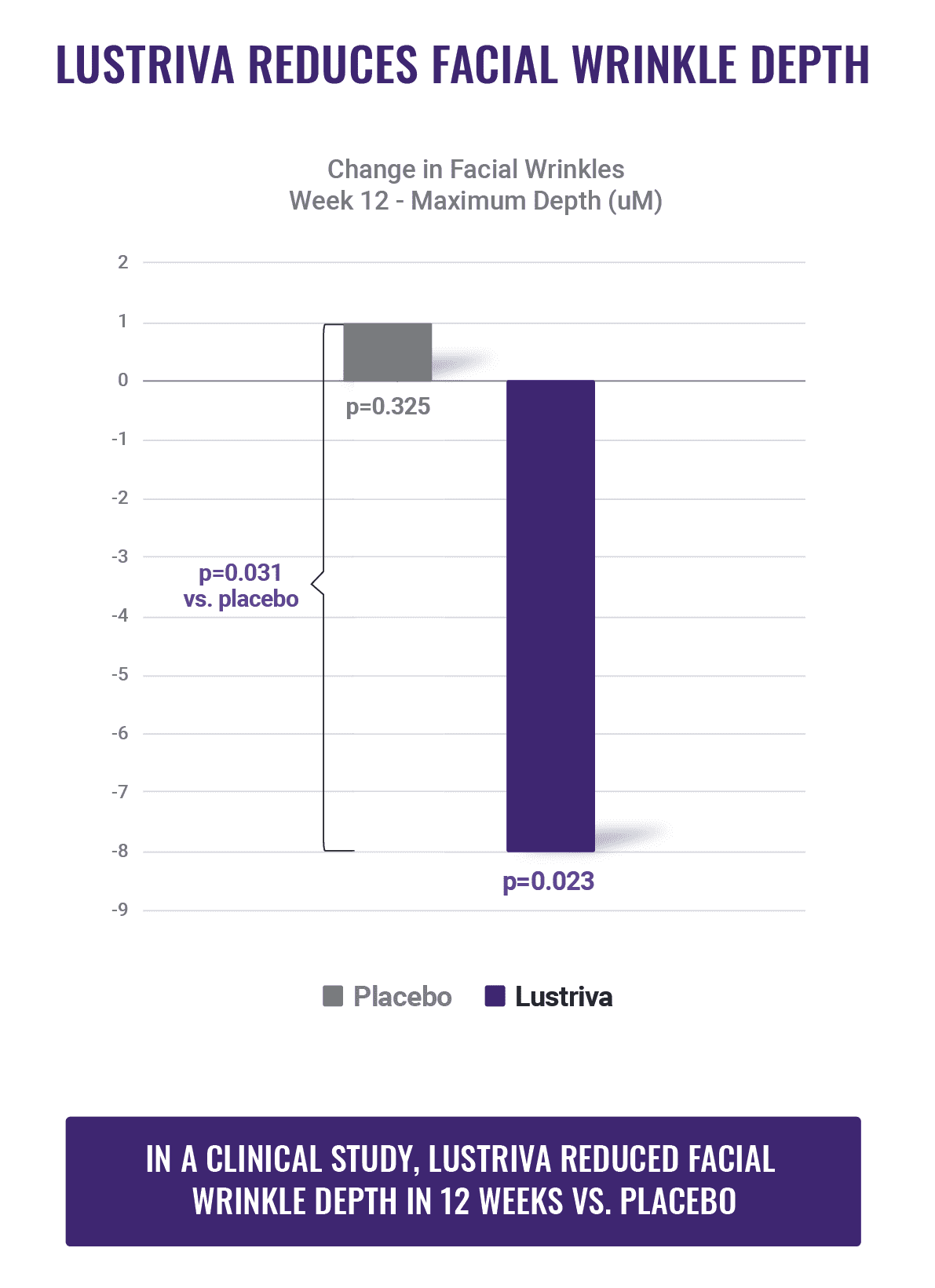
Participants in the High-Dose Lustriva group experienced a statistically significant reduction in wrinkle depth after 12 weeks.[5]
Lustriva also demonstrated efficacy in improving skin appearance. By the end of the 12-week trial, the high-dose Lustriva group showed a significant reduction in facial wrinkles compared to placebo, as measured by wrinkle depth using the Antares 3D system.[5]
Participants in the High-Dose Lustriva group experienced a statistically significant reduction in wrinkle depth after 12 weeks.[5]
Furthermore, Lustriva supported significant improvements in skin texture, fine lines, and overall facial smoothness compared to baseline measurements. These improvements suggest that Lustriva's components improve the structural integrity of the skin, helping to combat signs of aging like wrinkles and roughness.
Mechanisms of Action: How Lustriva Works
Looking at Nutrition21's patents[1-3] and the human pharmacokinetic research,[8] we can get a good handle on why the above human hair and skin study was so successful.
To understand how Lustriva exerts its effects on hair and skin health, we need to analyze how its components – inositol-stabilized arginine silicate and magnesium biotinate – are known to independently promote skin and hair vitality. In short, biotin plays a role in skin and hair health by functioning in metabolizing amino acids and helping to enhance synthesis of certain proteins,[4,9] and silicon is important for structural compounds important to skin health.[10,11]
Supporting Hair and Skin Through Multiple Means
Silicon, an essential trace element in human biology, plays a key role in promoting the synthesis of collagen and keratin, two critical proteins that provide structural integrity to hair, skin, and nails.[10] Silicon is linked to promoting the synthesis of components important to the structure of hair and skin, while providing structural support for them.
Additionally, biotin's role in cellular energy metabolism means it could be supporting the overall health of hair follicles, which require significant amounts of energy to sustain active hair growth.[6] Biotin may also play a role in supporting the assembly and stability of keratin.[12]
Furthermore, biotin supports fatty acid production,[13] which plays a critical role in maintaining skin's hydration barrier.[14] This might help skin retain moisture, preventing dryness and maintaining a healthy glow.
Conclusion: A Beauty-From-Within Ingredient That Moves the Needle for Hair and Skin Health
The bottom line on Lustriva is that the randomized controlled trial demonstrated that this one-of-a-kind combination of arginine silicate and magnesium biotinate at the 160 milligram dose, can significantly and visibly promote healthy skin and hair – in just 12 weeks of supplementation.
The human data showing a significant increase in the number of thicker hairs alongside improvements in skin appearance is quite resounding. We believe Nutrition21 has the next big thing in terms of hair and skin care, and expect this to reach more brands that haven't historically been in the beauty space to enter the market as demand from consumers -- both and women -- is only continuing to rise.


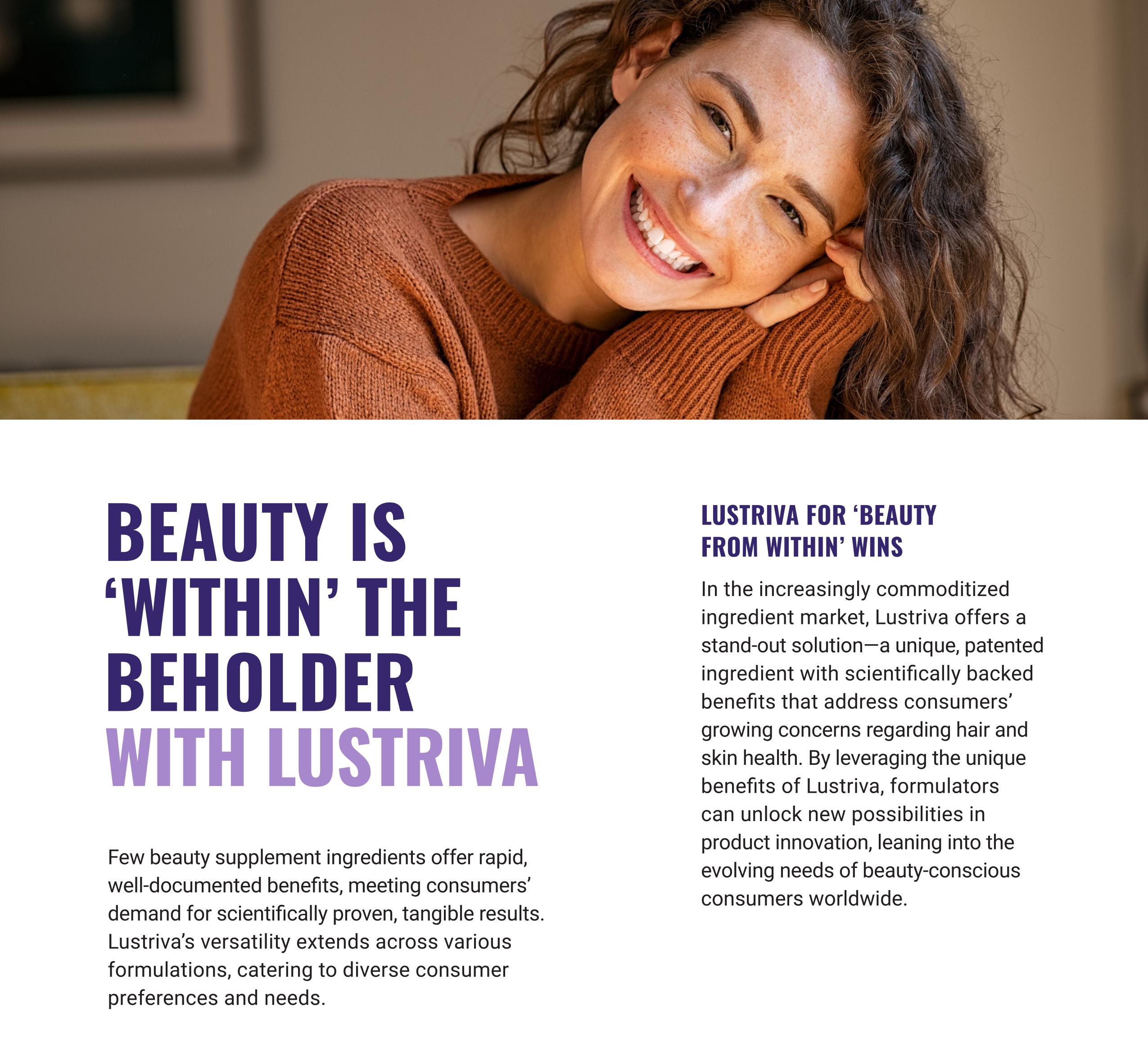
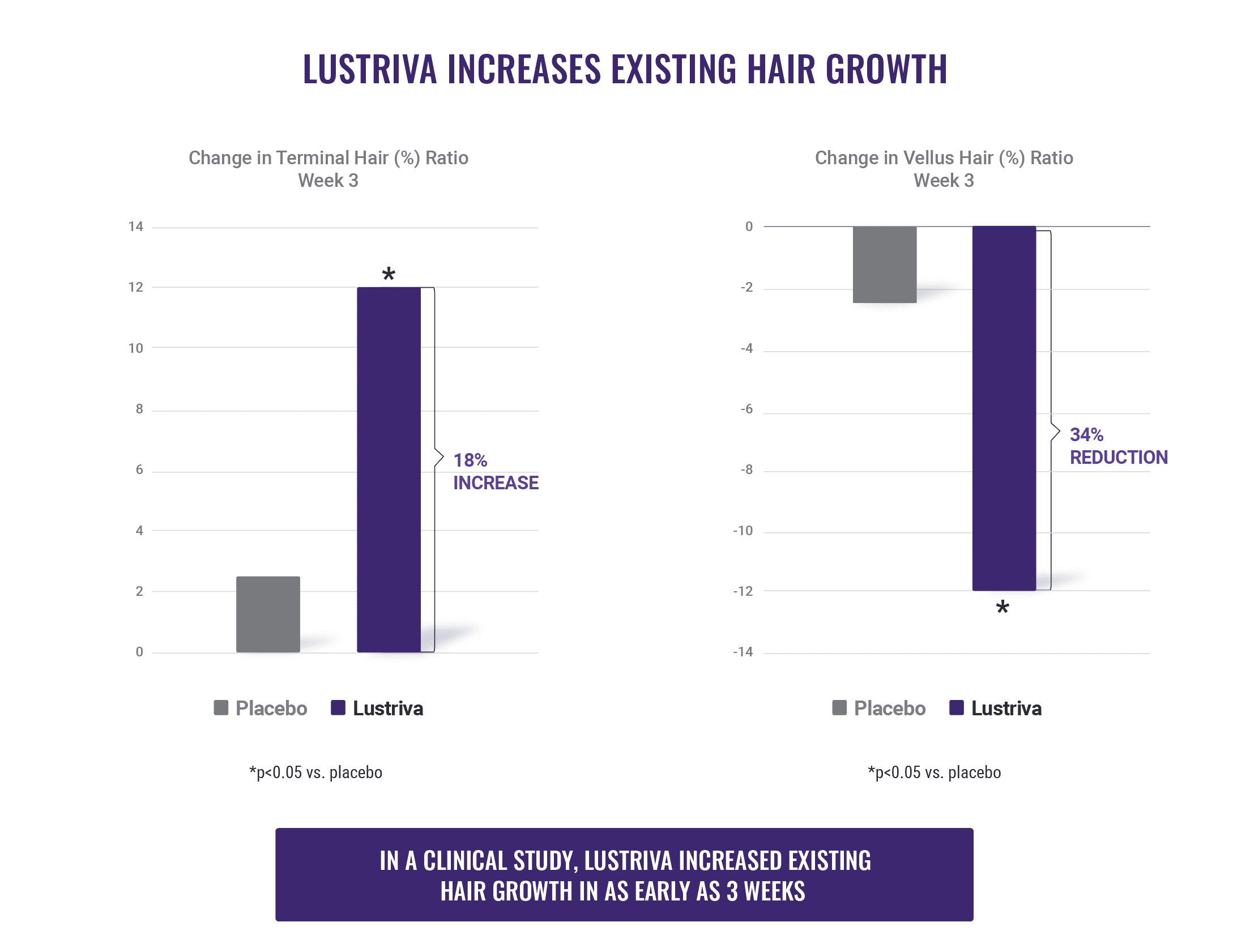
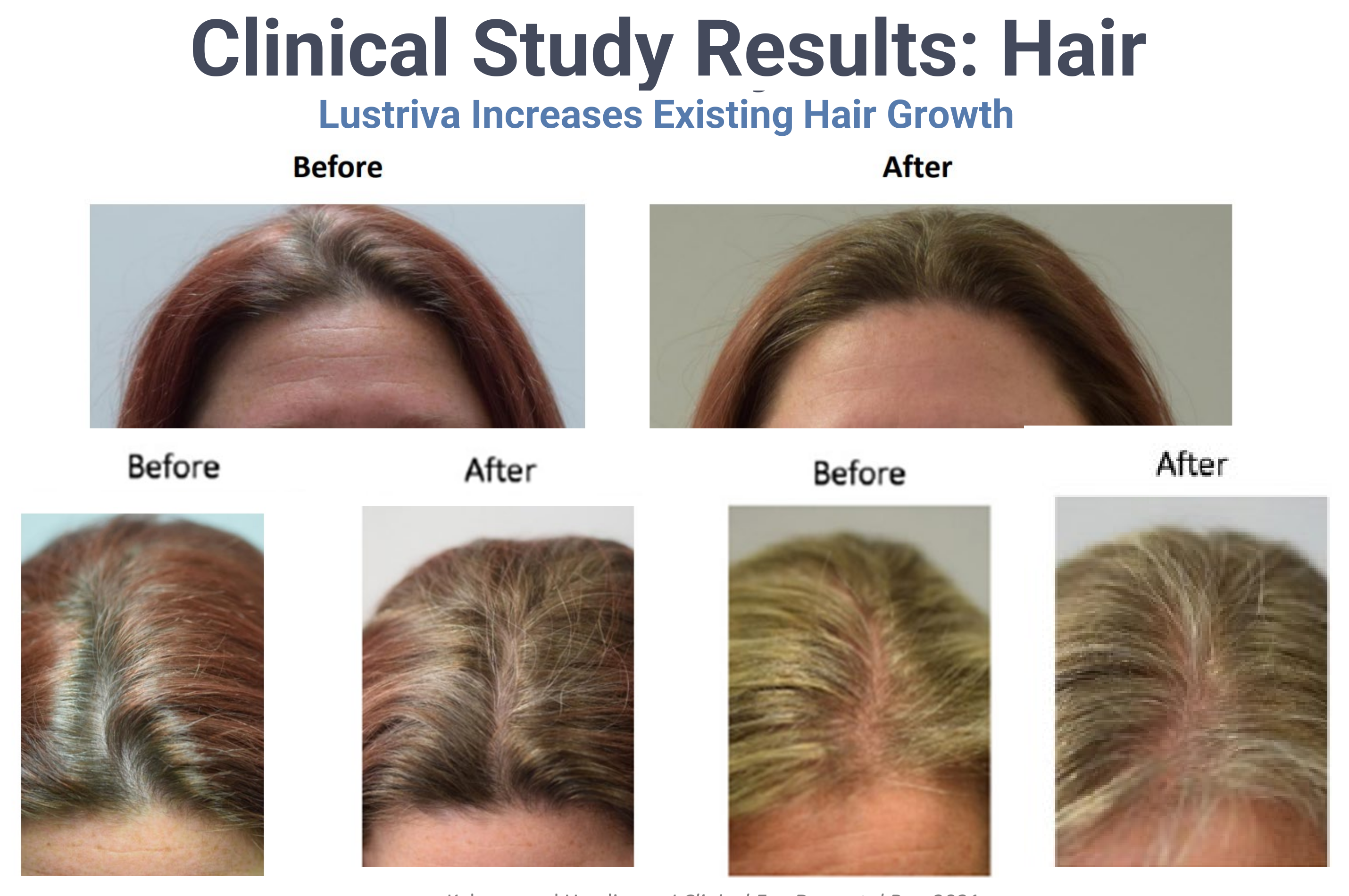
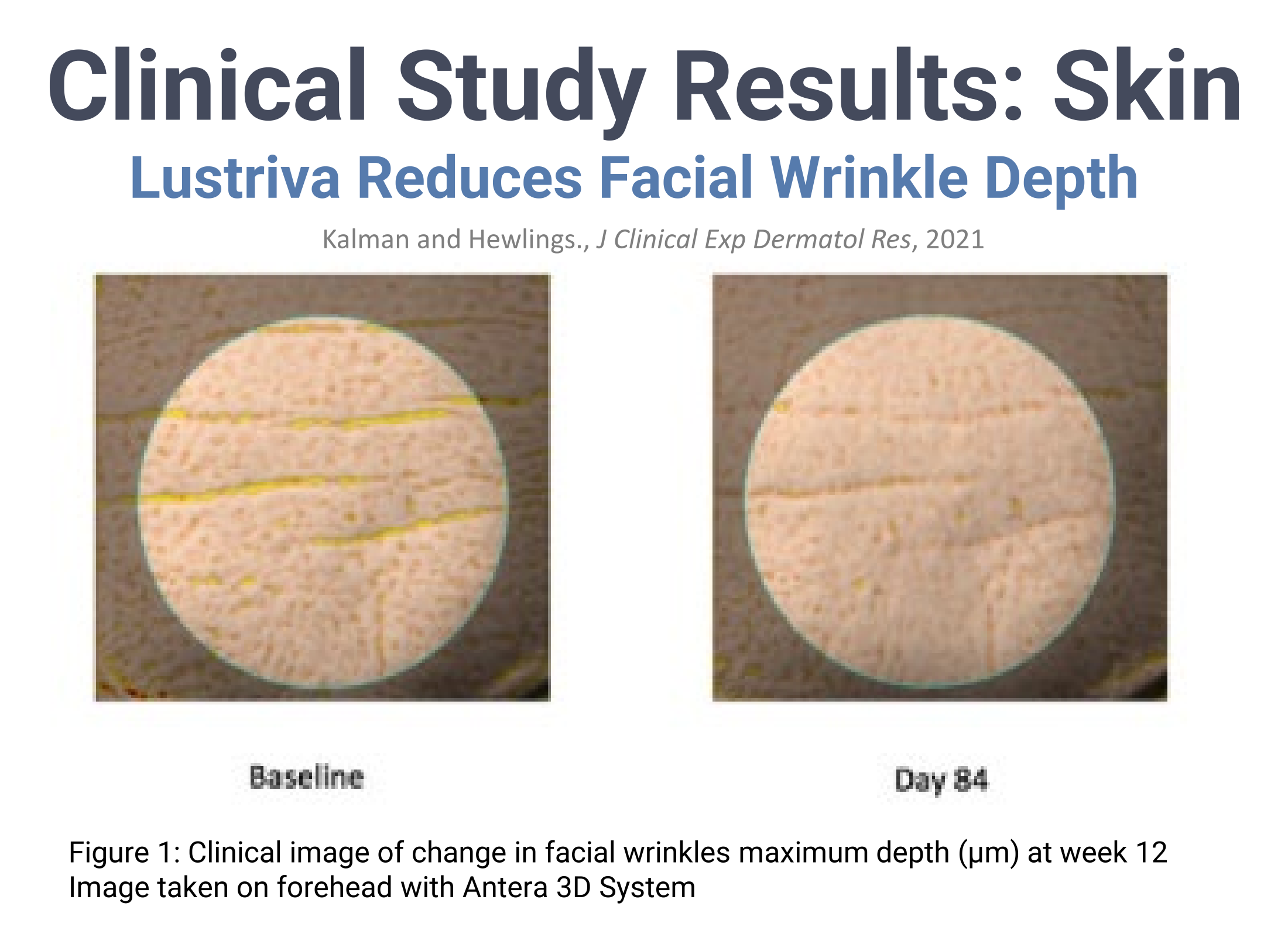
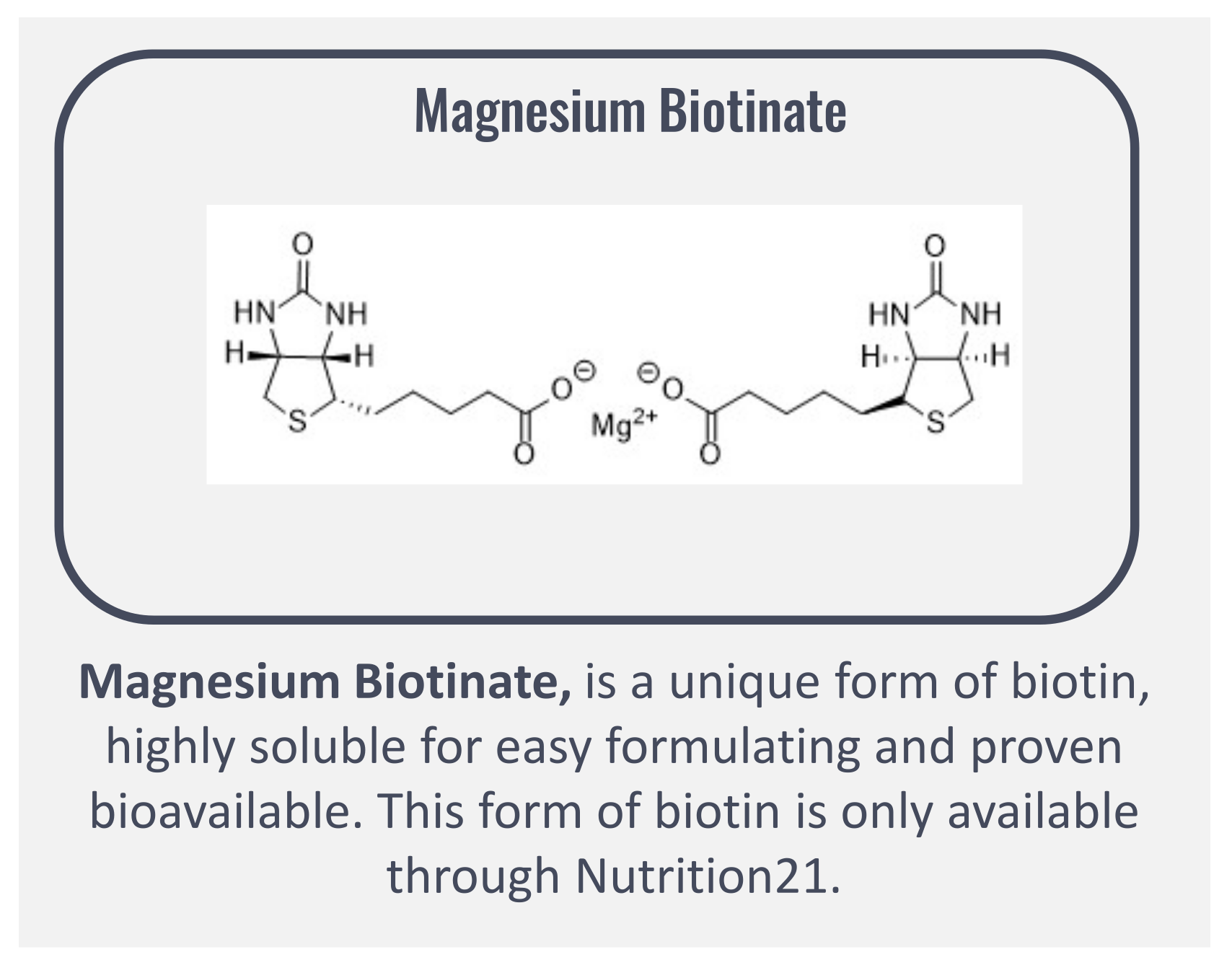
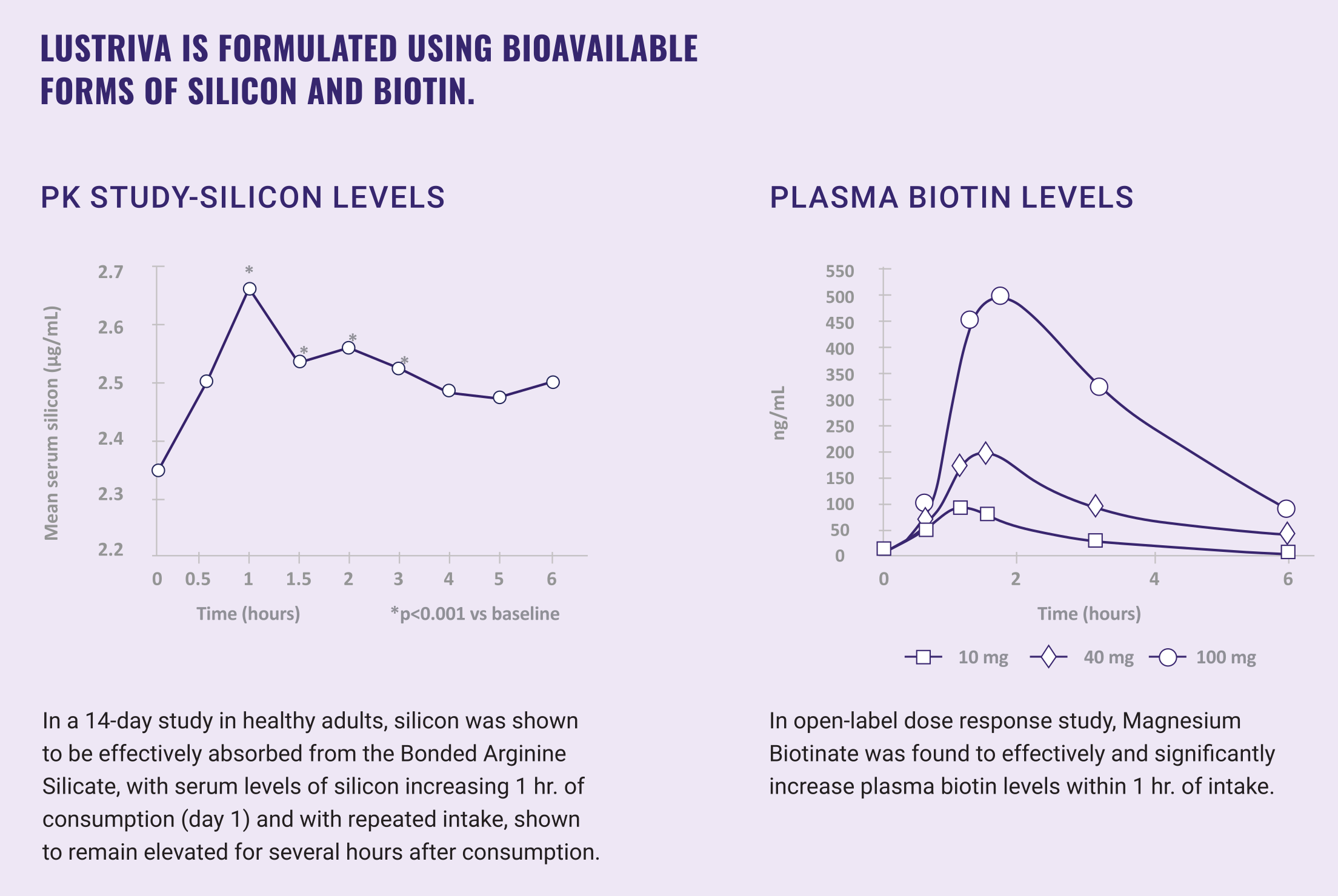



Comments and Discussion (Powered by the PricePlow Forum)